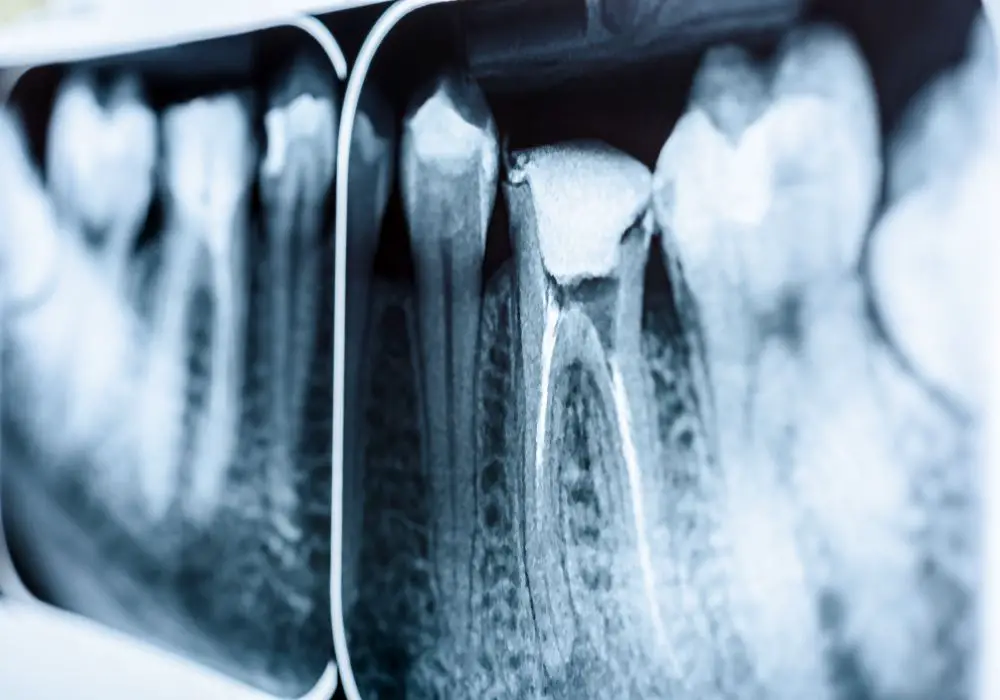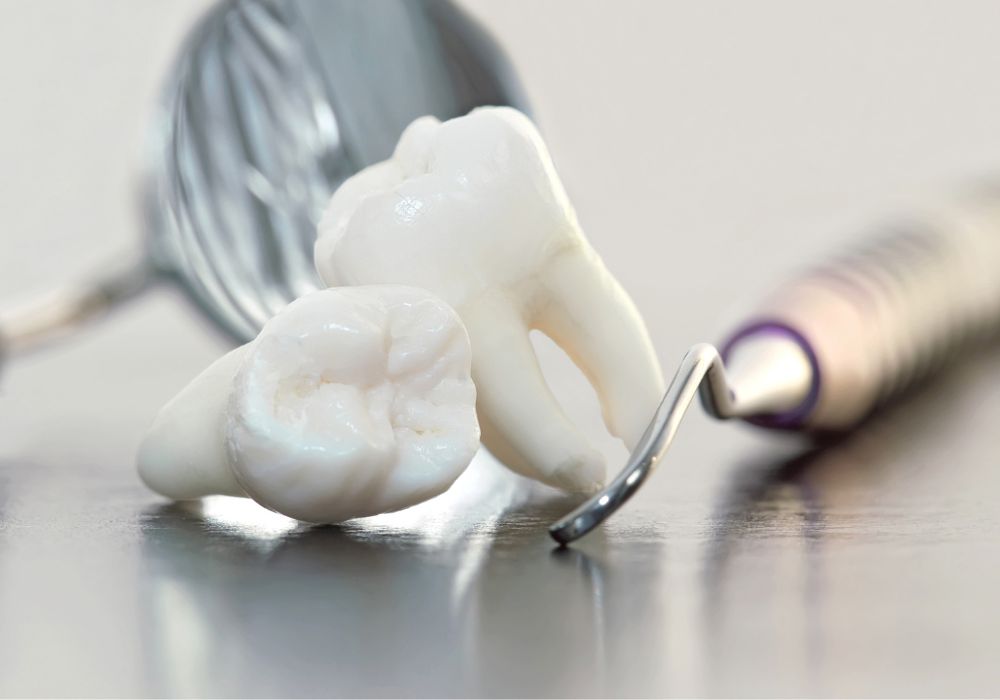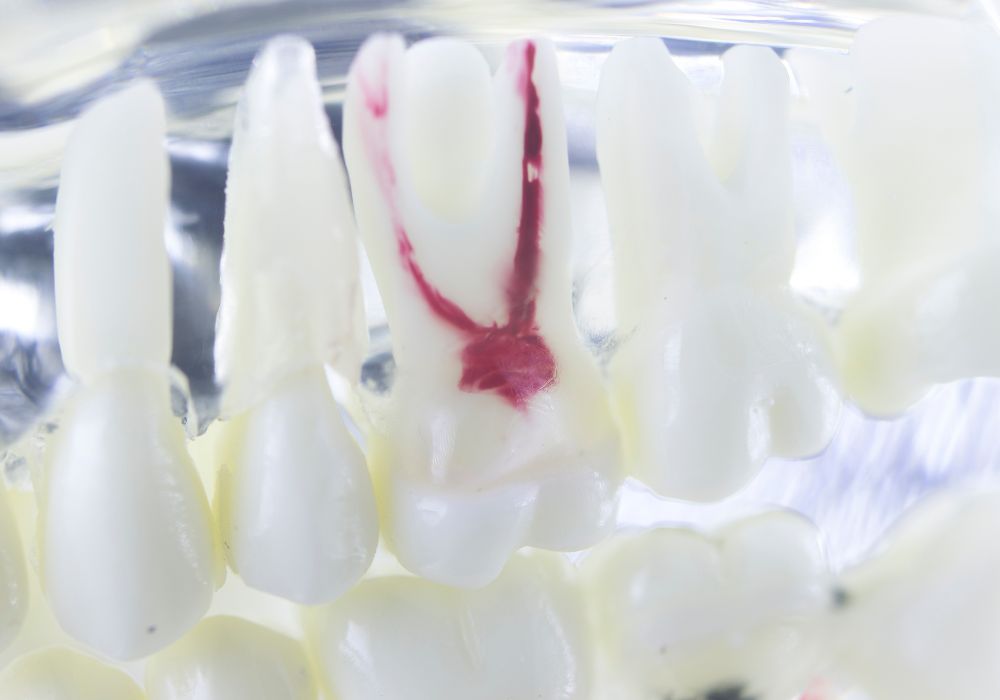Have you ever looked at dental x-rays and noticed what seems like an unusually long root on one of your teeth? Or maybe your dentist pointed out that you have a larger-than-normal root structure? If so, you may have wondered why do my teeth have such big roots and should I be concerned?
Root size variations are quite common – some people naturally have smaller roots while others develop larger roots over time. In most cases, mildly longer or wider roots are not problematic. But in more severe cases of root enlargement, complications like fractures, bone loss, biting issues, and aesthetic concerns can arise.
This article will provide an overview of normal tooth root anatomy, explain reasons for root enlargement, discuss related problems it can cause, and summarize treatment options for managing oversized roots. Let’s explore why you may have big tooth roots and what can be done to maintain healthy teeth and gums.
An overview of tooth anatomy
Before discussing enlarged roots, it helps to understand some basic tooth anatomy first. Teeth are comprised of two main parts – the visible crown covered in enamel, and the hidden root covered in cementum.
The crown is the portion of the tooth that protrudes above the gum line. It consists of:
- Enamel – The outermost protective coating that covers the entire crown. It is the hardest substance in the human body.
- Dentin – The layer underneath the enamel that makes up the bulk of the tooth structure. It is not as hard as enamel but still quite durable.
- Pulp – The innermost layer containing blood vessels, nerves, and connective tissue. The pulp runs down from the top of the crown into the root canal(s).
The root is the portion that anchors the tooth into the jaw bone. It lies underneath the gum line and is not visible unless exposed from gum recession. Key parts include:
- Cementum – This bonelike substance covers the outer surface of roots just as enamel covers the crown. It provides attachment for periodontal ligaments.
- Root canal – The hollow inner channel(s) that contain blood vessels, nerves, and connective tissue. It runs from the pulp chamber down through the center of each root.
- Apical foramen – The small opening at the tip of each root from which nerves and vessels enter the tooth.
- Alveolar bone – The bony socket that surrounds and supports each tooth root. Periodontal ligaments attach the root to this bone.
Normal variations in tooth root size
The size and shape of tooth roots can vary significantly between different teeth as well as different individuals. Here are some general guidelines:
Root length
- Incisors and canines often have longer, single roots with an average length of 13-17 mm.
- Premolars may have single or multiple roots that average 11-13 mm in length.
- Molars usually have shorter, multi-rooted anatomy, with root lengths averaging 9-11 mm.
Root width and shape
- Incisors and canines tend to have narrower, conical roots that are rounded or oval in cross-section.
- Premolars can have wider roots that are more rectangular in shape, especially molars with multiple roots.
- Molar roots are often shorter, stubbier, and diverge into multiple root trunks. Their cross-section is more triangular.
Keep in mind these are just general averages. Actual root size and anatomy varies quite a bit between individuals. Differences in genetics, gender, environment, and occlusal stresses can all impact root shape and dimensions. Unless excessively long or wide, mildly larger roots may be perfectly normal for that person.
When are tooth roots considered enlarged?

At what point are tooth roots truly enlarged rather than just slightly bigger? There are a few guidelines dentists use:
- Radiographic length – Roots are likely enlarged if they extend well beyond the normal averages. For example, incisor roots over 20 mm or molar roots over 15 mm.
- Radiographic width – Root thickening or fusion may be present if roots are 2-3 times wider than usual.
- Clinical appearance – Severe gum recession that exposes very long root trunks can indicate pathological enlargement.
- Mesial-distal width – Roots are enlarged if the overall mesial-distal tooth width appears significantly expanded.
- Protrusion or divergence – Roots angled in unnatural directions or flaring out suggest pathology.
- Symptoms – Clinical signs like severe mobility, biting interference, or unexplained sensitivity may reflect underlying root enlargement.
In borderline cases, additional diagnostic x-rays from different angles or CT scans can help dentists fully visualize and measure root anatomy. But anything beyond 2 standard deviations from statistically normal root size would likely be considered definitively enlarged.
Reasons why tooth roots may enlarge
There are a number of potential reasons tooth roots may appear or measure larger than expected:
1. Genetics and ethnicity
Some people simply inherit longer, shorter, or bulkier tooth roots from their parents. Certain ethnicities tend to have distinct tooth root shapes and sizes as well. For example, those with African ancestry often have larger, more bulbous molar roots versus the thinner roots seen in those of European descent.
2. Age and secondary/tertiary dentin
As a person ages, the pulp chamber and root canals naturally narrow due to dentin deposition. This added dentin thickens the interior root canal walls, making roots appear more radiopaque on x-rays.
3. Gum recession
When gums recede from periodontal disease, more of the root structure gets exposed. This makes roots look longer as they become more visible. Severe gum recession can expose 2-3 times the normal root length.
4. Orthodontic treatment
The pressures of braces or aligners can induce some apical root resorption while also stimulating apical cementum deposition that lengthens roots over time. This can subtly change root size and shape.
5. Dental procedures
Root canals, extractions, apicoectomies, and other procedures involving the roots often result in thickened cementum over the healing site. The chronic irritation can lead to deposition that enlarges the root.
6. External root resorption
Loss of cementum due to resorption causes overall root shortening and blunting that leaves roots looking wider. This advanced inflammatory condition often follows traumatic injuries.
7. Tumors/cysts of the mouth and jaw
Benign growths like cementomas, cemento-ossifying fibromas, and odontogenic cysts can develop around tooth roots. They manifest as amorphous radiopacities that blend with the root.
8. Systemic illnesses
Some chronic illnesses affect mineral metabolism and can cause abnormal secondary cementum formation. For example, thyroid dysfunction, vitamin D deficiency, renal failure, etc.
Problems caused by enlarged tooth roots

In milder cases, slightly larger roots may not cause any issues. But significantly enlarged roots can lead to some of the following problems:
- Fracturing – Excessively long and thin roots are weaker and prone to fractures from normal chewing stresses.
- Mobility – Teeth may become loose if enlarged roots do not fit properly in the bony socket to provide adequate support.
- Occlusal interference – Large roots positioned in the path of normal jaw movements can block the bite from fully closing.
- Tissue impingement – Root overgrowth into maxillary sinuses or other anatomical structures can damage tissues.
- Periapical lesions – Necrotic pulp tissue in an enlarged root tip can cause painful abscesses and infection.
- Periodontal disease – Exposed cementum due to severe gum recession around huge roots increases decay risks.
- Tooth instability – Enlarged roots unable to bear normal bite forces without fracturing or loosening.
- Aesthetics – Gum recession around overgrown roots looks unsightly and causes sensitivity to hot/cold foods.
- Orthodontic complications – Moving or straightening other teeth is impeded by obstruction from enlarged roots.
- Post orthodontic relapse – Teeth drift back due to inadequate support from unstable, misshapen mega-roots.
Thus, diagnosing and monitoring significant root enlargement is important to prevent such problems and maintain healthy dental function.
Diagnosing enlarged tooth roots
If a patient complains of symptoms possibly related to root enlargement, the dentist will conduct a series of diagnostic tests:
- Clinical exam – Extraoral and intraoral inspection of the suspect tooth may reveal visual signs like asymmetry or poor alignment.
- Mobility testing – Teeth are wiggled to check for looseness suggesting poor root support.
- Probing depths – Deep periodontal pockets around the tooth indicate probable bone loss.
- Percussion – Tapping the tooth tests for sensitivity that could reflect underlying root problems.
- Radiographs – X-rays taken at different angles will help measure root size and screen for pathologies.
- Cone beam CT – A 3D scan visualizes precise root anatomy, unlike standard 2D radiographs.
- Vitality testing – Assessing pulp vitality can determine if the root is necrotic.
- Tooth sleuth – A metal detector tool detects excess secondary cementum that thickens roots.
Based on these clinical and radiographic findings, the dentist can determine if root enlargement is present and discern the likely etiology. From there, appropriate treatment can be planned.
Treating enlarged tooth roots

If no issues are apparent, mildly enlarged roots may just be monitored at regular dental visits. But several treatment approaches exist for problematic mega-roots:
1. Dental restorations
Fillings, inlays, onlays, or crowns can restore teeth with enlarged roots weakened by caries or cracks. This helps reinforce the remaining root structure.
2. Root canal
If the pulp chamber of an enlarged necrotic root becomes infected, root canal therapy can remove the diseased pulp and save the tooth.
3. Crown lengthening
This procedure exposes more natural crown by surgically lowering the gum line and bone around an enlarged root. It creates better tooth proportions.
4. Orthodontic tooth movement
Braces or clear aligners can reposition and upright severely tilted teeth with overgrown roots. This also evens out the bite.
5. Root resection
Removing a portion of the excessively long root tip can shorten the root and facilitate tooth movement if aligned improperly. This is done apically so as not to shorten height of bone support.
6. Tooth extraction and replacement
If problematic enlarged roots are not treatable through other methods, the tooth may be extracted and replaced with a dental implant, bridge, or partial denture.
With proper diagnosis, treatment, and maintenance, teeth with enlarged roots can still function normally and remain healthy for many years. Working closely with your dentist for follow-up and good oral care is advised.
Common questions about enlarged tooth roots
Here are answers to some frequently asked questions about this topic:
Are teeth with longer roots weaker or more prone to problems?
Excessively elongated, thin roots beyond what is anatomically normal for that tooth can be more susceptible to fracture. But moderately longer roots without thinning may not necessarily be weaker. Proper dental care and bite adjustment can help prevent problems.
What causes fused roots where two roots join into one?
Severe gum disease, trauma, cracks, or failed root canals are common causes of fused roots. The chronic irritation accelerates secondary cementum formation between adjacent roots, eventually joining them into one enlarged structure.
How can I tell if my root is getting bigger?
The main symptoms are increased tooth looseness, changes in the way your teeth fit together, or biting sensitivity. Your dentist can take periodic x-rays to track any root growth over time. If clinical signs develop, prompt evaluation is needed.
Are surgical procedures available to reduce root size?
Intentional root amputation or reduction is rarely performed since it usually does worse damage. Orthodontic alignment, crown lengthening, bite adjustment, or tooth extraction are safer ways to manage enlarged roots. Protecting root structure is preferable.
Can root enlargement affect or be caused by other teeth?
Yes, in some cases. For example, overgrown roots can displace adjacent teeth. And problematic molars with fused mega-roots sometimes arise from partially erupted or impacted wisdom teeth that stimulate cementum deposition. So it’s important to evaluate the whole mouth.
Conclusion
In summary, teeth roots may appear enlarged on dental x-rays for a variety of reasons, including genetics, age, gum disease, orthodontics, and chronic inflammation. Mild root size increases are usually harmless, but substantially elongated roots can pose functional problems and aesthetic concerns. Work with your dentist to determine if your particular root enlargement is significant. If so, treatment like restorations, crown lengthening, orthodontics, or extraction may be recommended to protect your oral health and comfort. With close professional care, even teeth with abnormally large roots can remain functional and pain-free.






